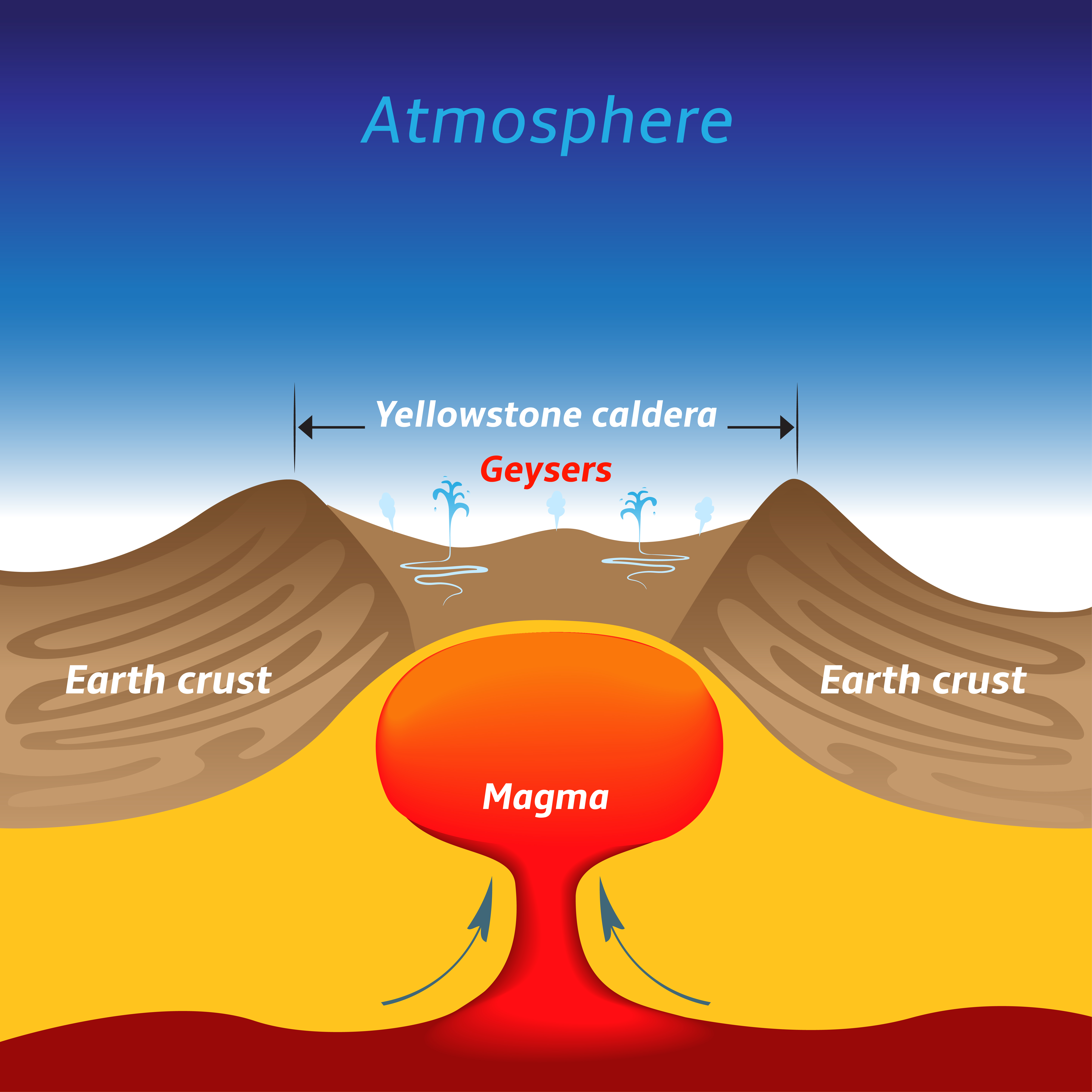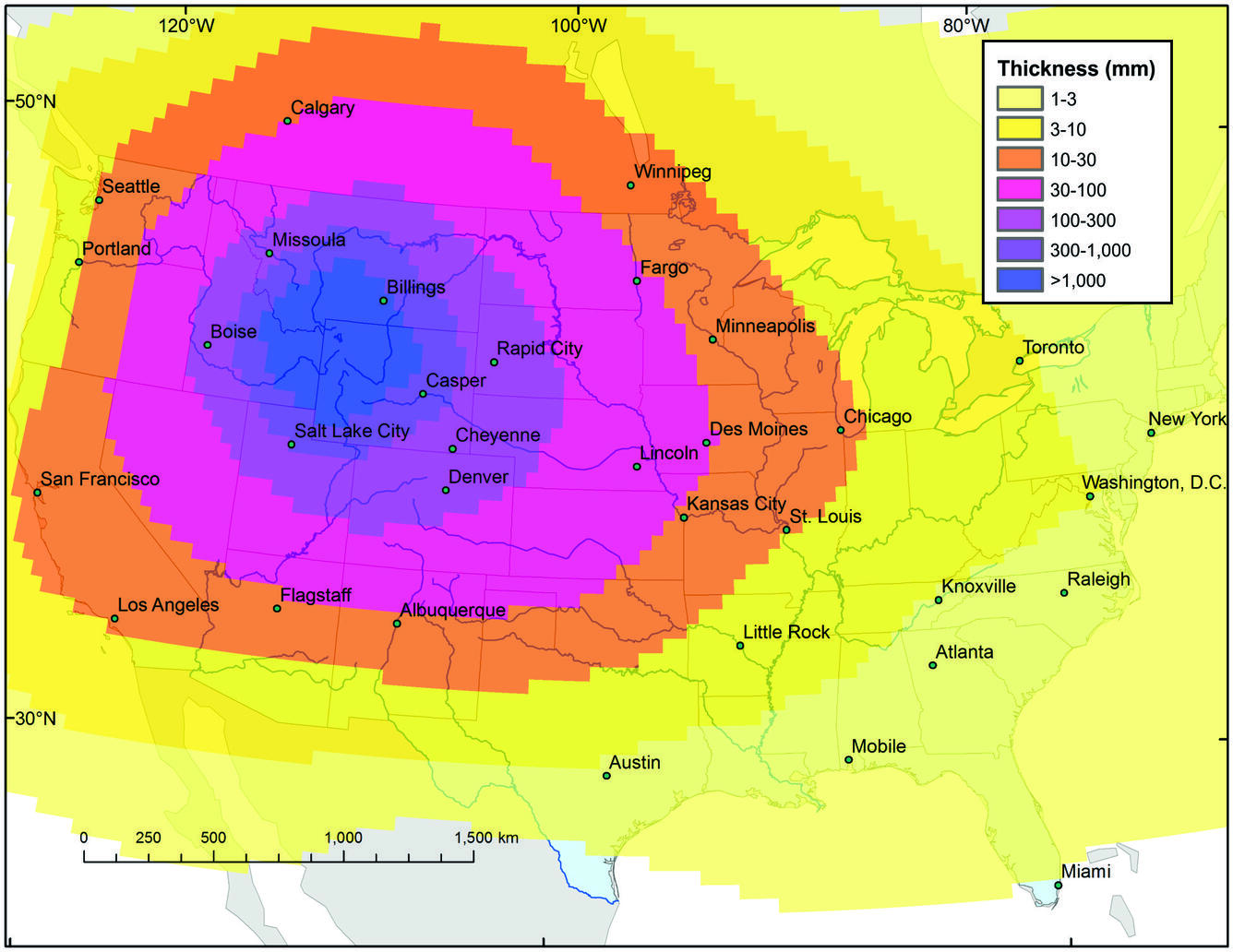The Yellowstone Caldera – one of the world’s largest active volcanic systems – is a sleeping giant that will raise havoc when it wakes from its slumber. The good news is that the supervolcano is not “overdue” for an eruption, despite what you may have read online. The bad news is that volcanic activity is infamously difficult to forecast and their outbursts do not follow predictable schedules.
The Yellowstone Caldera is a 70- by 45-kilometer (43- by 28-mile) crater located in northwestern Wyoming, filled with hot springs, geyser basins, and other signs of hydrothermal activity. Beneath this vast caldera sit two enormous chambers of magma that threaten to burst open, spewing lava and ash across the surrounding region.
According to the US Geological Survey (USGS), Yellowstone has had three immense explosive volcanic eruptions over the past 2.1 million years: one 2.08 million years ago, another 1.3 8 million years ago, and the latest 631,000 years ago.
Based on these three events, Yellowstone has a recurrence interval of about 600,000 to 800,000 years, with an average of about 725,000 years between eruptions. Since the last major eruption was 631,000 years ago, you could infer that the Yellowstone supervolcano is due for another flare-up. However, this is misleading – volcanoes don’t work on regular schedules like clockwork.

A rough illustration of the Yellowstone caldera and what can be found beneath.
Image credit: Agil Leonardo/Shutterstock.com
Furthermore, many scientists think that Yellowstone’s supervolcano doesn’t have the oomph it needs to deliver another disastrous eruption. The rhyolite magma chamber beneath Yellowstone is only 5 to 15 percent molten (i.e. melted and viscous), so there might not even be enough magma beneath the caldera to feed an eruption.
It’s also possible that Yellowstone might have a minor bout of activity without destroying North America and beyond. Around 70,000 years ago, rhyolitic lava flows erupted from the supervolcano. While it reshaped the geology of southwestern Yellowstone National Park, it wasn’t exactly catastrophic to life on the planet.
That said, anything is possible. Its surrounding geological layers could collapse or its volcanic chambers could receive a fresh injection of magma, reinvigorating the beast from beneath.
If a major eruption were to hypothetically occur today at Yellowstone, the impact would be felt across the world. Vast swathes of Montana, Idaho, and Wyoming would become covered in pyroclastic flows of hot gas and volcanic matter. Estimates vary, but some suggest this could kill up to 90,000 people immediately.

A map showing the approximate ash coverage across the US following a supereruption of Yellowstone.
Image credit: USGS/Public Domain
In the three previous “big ones,” volcanic ash covered much of the western half of North America. Within several hundred kilometers from Yellowstone, this layer of ash was likely a foot deep.
Recent models suggest that an area about 80 kilometers (50 miles) around the vent would be caked in 3 meters (about 10 feet) of ash within just a few days. Relatively nearby locations like Salt Lake City would be buried beneath 1 meter (3.3 feet) of ash. In fact, much of mainland US – from Florida to New England – would receive a light dusting of volcanic debris too.
One of the biggest problems would be ash being swept across the planet and into the stratosphere where it would block out the Sun. Temperatures would drop and sunlight levels would be slashed, leading to ecosystem collapse, food shortages, and famine.
This is probably what happened around 74,000 years ago when a major “supereruption” occurred at the volcano in present-day Lake Toba in Sumatra, Indonesia. Some researchers believe that the eruption was so catastrophic it reduced the human population to less than 10,000, creating a genetic bottleneck in what’s known as the Toba catastrophe theory.
Others contend the impact on the human population wasn’t this severe, but it’s clear the supereruption had a profound impact on the planet. In today’s world, home to over 8 billion living people, the scale of human suffering would be even more immense if a supervolcano threw a hissy fit.
Fortunately, the chances of this grim fate occurring tomorrow are very slim – but not zero.
Source Link: Yellowstone Supervolcano: Is An Eruption Really Overdue?